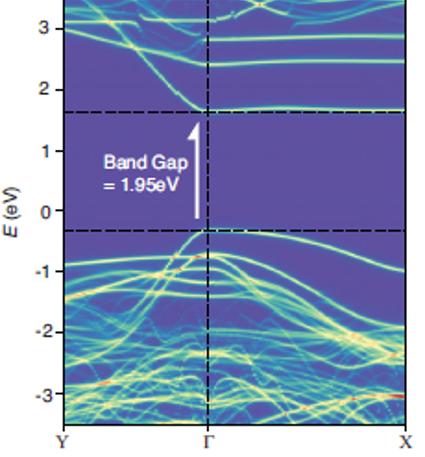First Direct Measurement of a Large Exciton Binding Energy in a 2D Magnet

Excitons, bound electron-hole pairs, influence the optical properties in strongly interacting solid-state systems and are typically most stable and pronounced in monolayer materials. Bulk systems with large exciton binding energies, on the other hand, are rare and the mechanisms driving their stability are still relatively unexplored.
Here, an exceptionally large exciton binding energy is reported in single crystals of the bulk van der Waals antiferromagnet CrSBr. Utilizing state-of-the-art angle-resolved photoemission spectroscopy and self-consistent ab-initio GW calculations, direct spectroscopic evidence is presented supporting electronic localization and weak dielectric screening as mechanisms contributing to the amplified exciton binding energy.
Furthermore, it is reported that surface doping enables broad tunability of the band gap offering promise for engineering of the optical and electronic properties. These results indicate that CrSBr is a promising material for the study of the role of anisotropy in strongly interacting bulk systems and for the development of exciton-based optoelectronics.
